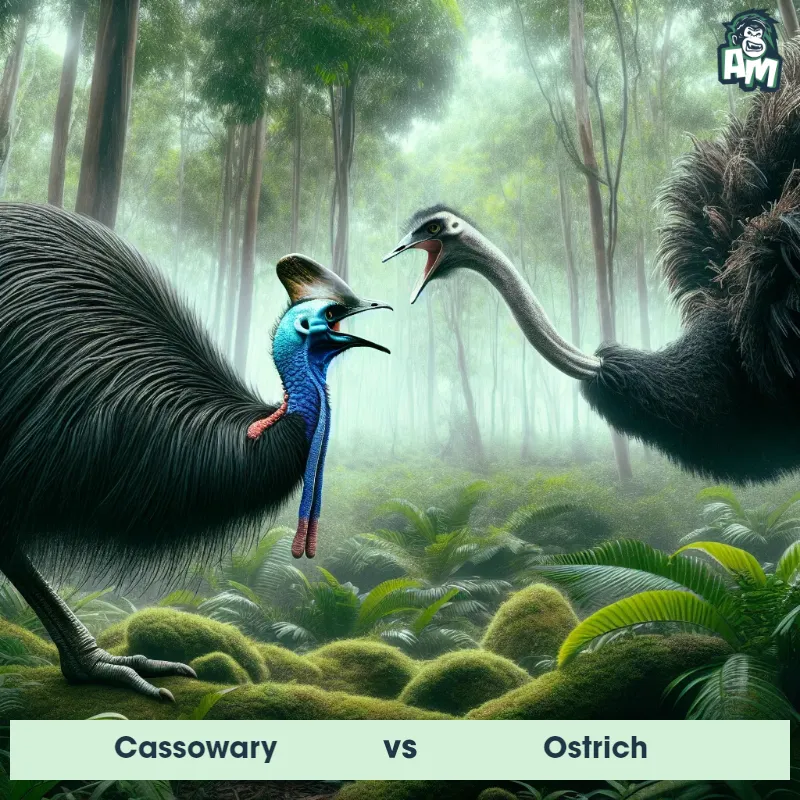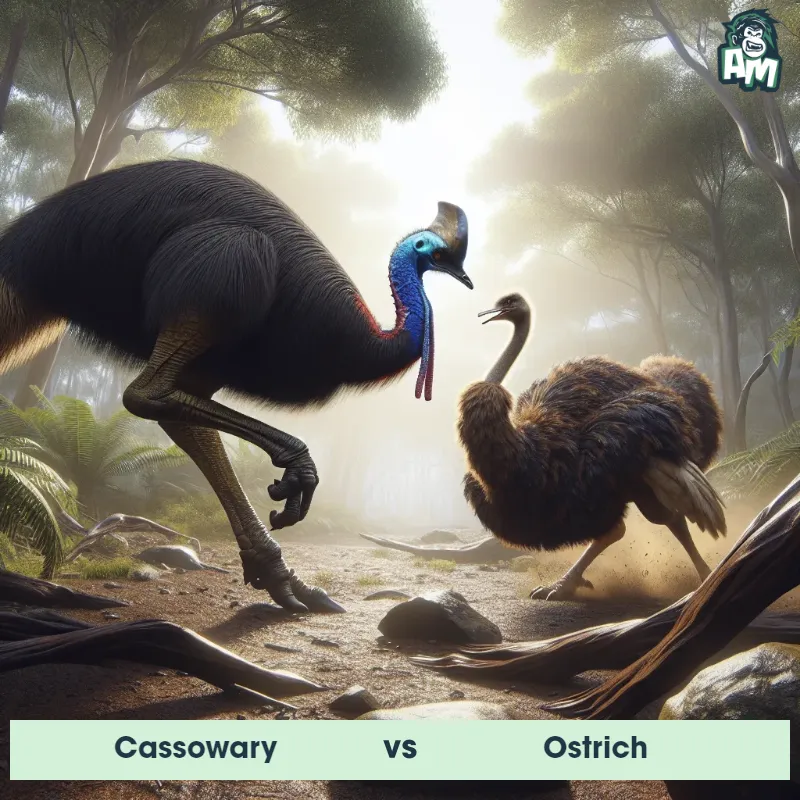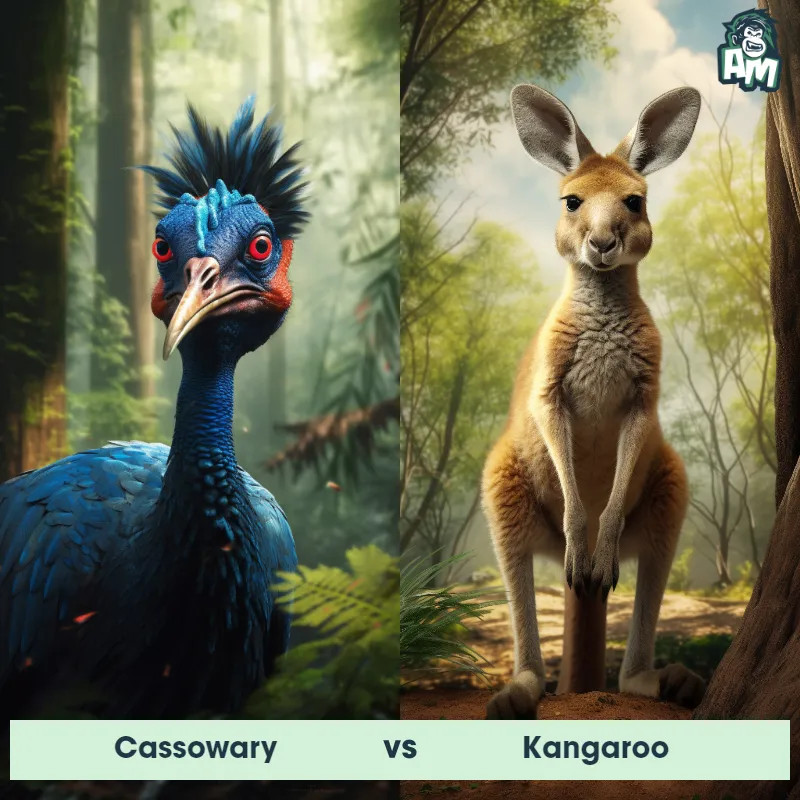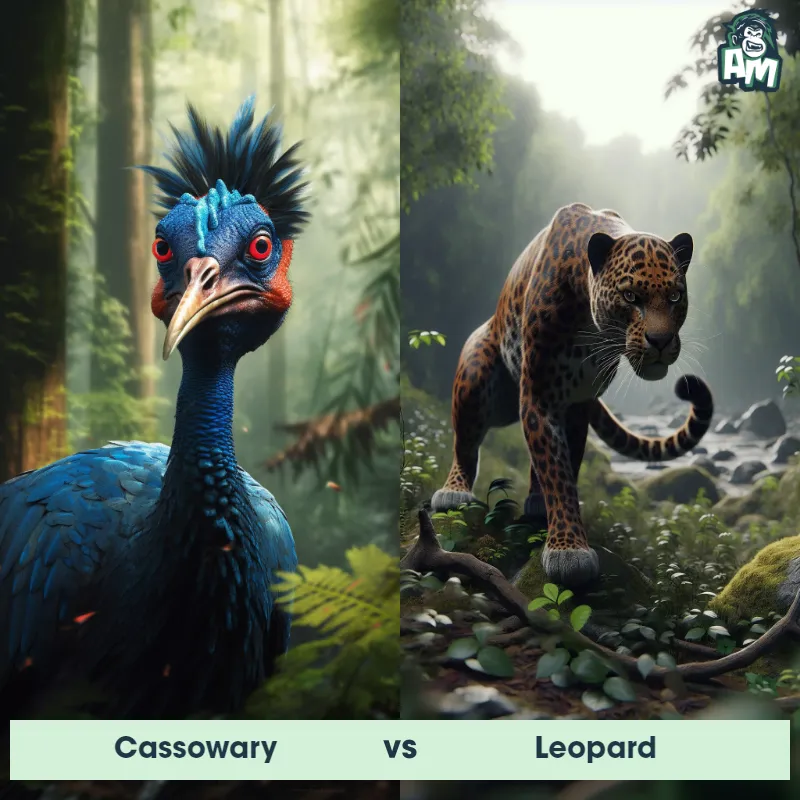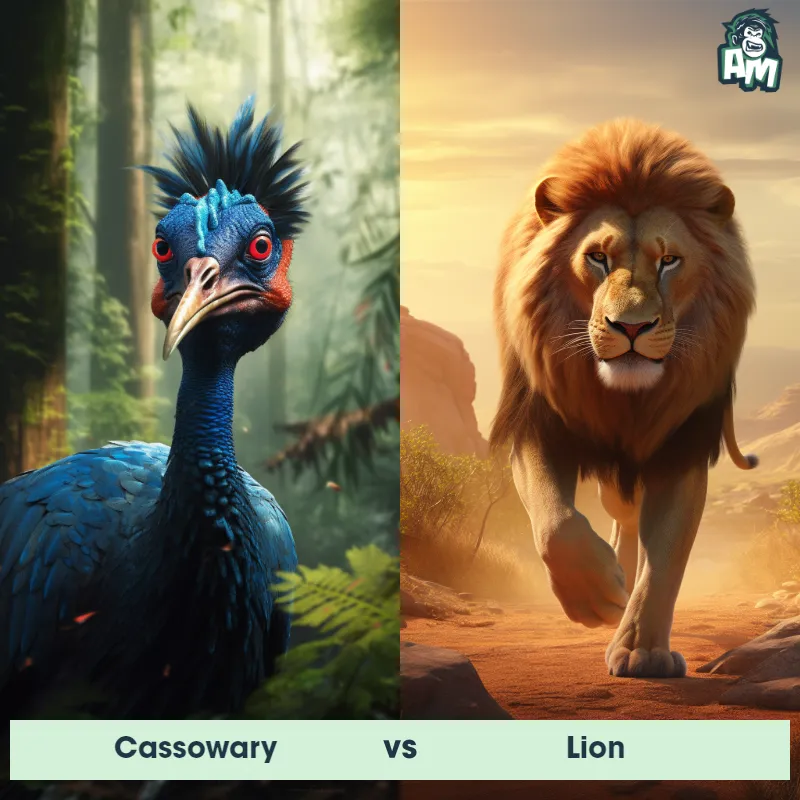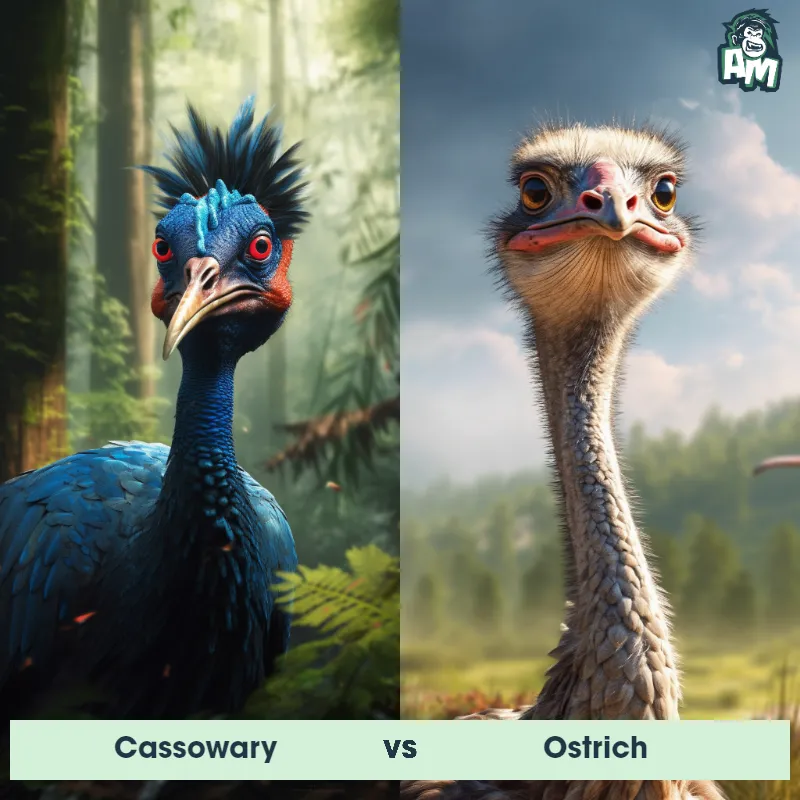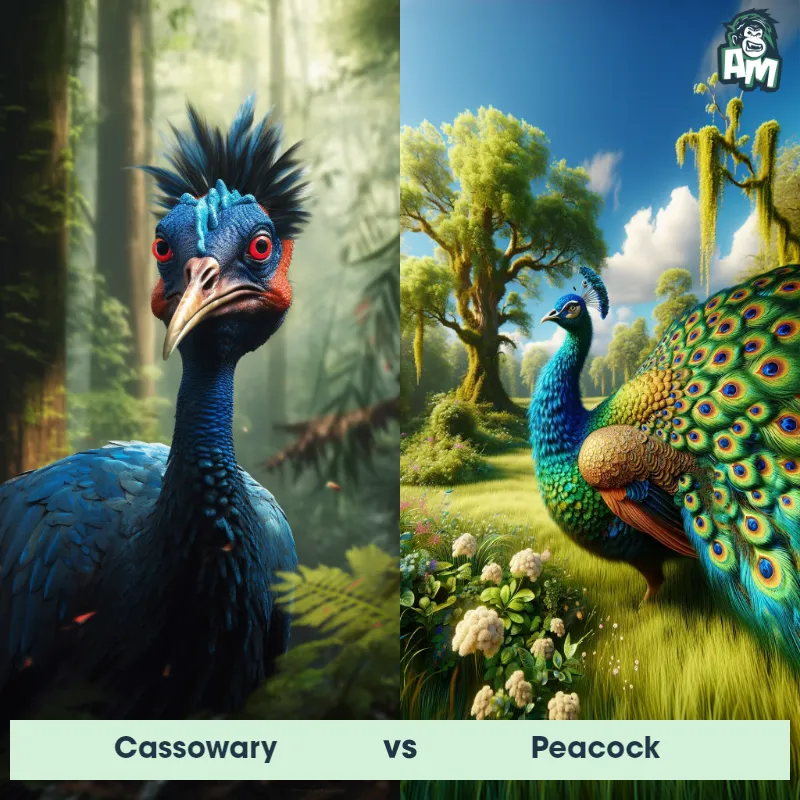The Cassowary
The Cassowary, also known as the Southern Cassowary, is a large flightless bird native to the rainforests of New Guinea and northeastern Australia. It is known for its vibrant plumage, with black feathers covering its body, a bright blue neck, a red or yellow wattle, and a helmet-like crest on its head.

| Cassowary | |
|---|---|
| Size | Up to 5.6 feet (1.7 meters) tall |
| Weight | Up to 167 pounds (76 kilograms) |
| Speed | Speed: 31 mph (50 km/hr) |
| Key Strength | Powerful legs and sharp claws |
| Biggest Weakness | None |
| Scientific Name | Casuarius casuarius |
| Family | Casuariidae |
| Habitat | Tropical forests |
| Geography | Australia and New Guinea |
| Diet | Omnivorous |
| Lifespan | 10 years - 20 years |

The Cassowary
The Cassowary, also known as the Southern Cassowary, is a large flightless bird native to the rainforests of New Guinea and northeastern Australia. It is known for its vibrant plumage, with black feathers covering its body, a bright blue neck, a red or yellow wattle, and a helmet-like crest on its head.
Fun Fact: The Cassowary has earned a reputation as a dangerous animal, with its powerful kick capable of inflicting serious injuries or even killing potential threats, including humans.
| Cassowary | |
|---|---|
| Size | Up to 5.6 feet (1.7 meters) tall |
| Weight | Up to 167 pounds (76 kilograms) |
| Speed | Speed: 31 mph (50 km/hr) |
| Key Strength | Powerful legs and sharp claws |
| Biggest Weakness | None |
| Scientific Name | Casuarius casuarius |
| Family | Casuariidae |
| Habitat | Tropical forests |
| Geography | Australia and New Guinea |
| Diet | Omnivorous |
| Lifespan | 10 years - 20 years |
Match Highlights
Cassowary Matchups
We use AI to simulate matchups between the Cassowary and other animals. Our simulation considers size, strength, and natural predatory behaviors to determine the most likely outcome.
Cassowary: Diet, Predators, Aggression, and Defensive Behaviors
What do Cassowaries eat?
Cassowaries are primarily frugivores, meaning they mainly eat fruits. They also consume a variety of plants, insects, small animals, and even fungi. Their diet contributes to the dispersal of seeds in their habitat, making them important for the ecosystem.
Do Cassowaries have any predators?
As adults, Cassowaries have very few natural predators due to their large size, powerful legs, and sharp claws. However, eggs and young chicks are vulnerable to predation by snakes, goannas, and birds of prey.
Are Cassowaries aggressive?
Cassowaries are known to be territorial and can exhibit aggressive behavior, especially during the mating season. They may charge, kick, or peck aggressively if they feel threatened or provoked. It is important for humans to keep a safe distance from these birds in the wild.
Do Cassowaries fight?
Cassowaries are known to fight over territory, mates, or food. These battles can be intense and involve kicking with their powerful legs and slashing with their sharp claws. They use their physical strength and agility to establish dominance.
How do Cassowaries defend themselves?
Cassowaries have several defense mechanisms to protect themselves from threats. They can run at high speeds up to 30 miles per hour, swim well, and jump up to 5 feet in the air. Additionally, their sharp claws are used for self-defense, and they have been known to kick with great force.
What is the Cassowary's biggest weakness in a fight?
Despite their size and strength, Cassowaries have a relatively thin skin on their neck region, which can be a vulnerable spot in a fight. Predators or rivals targeting this area can cause serious injuries to the Cassowary. Their neck is a prime target for rivals during aggressive encounters.
Fun Fact: The Cassowary is considered a keystone species in its ecosystem, as it plays a crucial role in seed dispersal. The large, ingested seeds pass through its digestive system and are then deposited across the rainforest, aiding in the regeneration and diversity of plant life.
Fun Fact: Despite its enormous size, the Cassowary is an excellent swimmer and is often observed wading through shallow water bodies, utilizing its strong legs and webbed feet to navigate and scout for food, including aquatic plants and insects.




